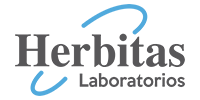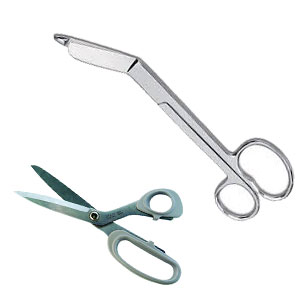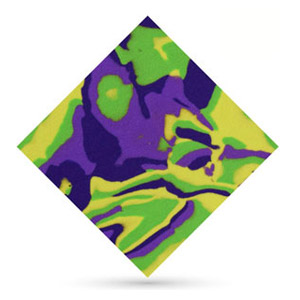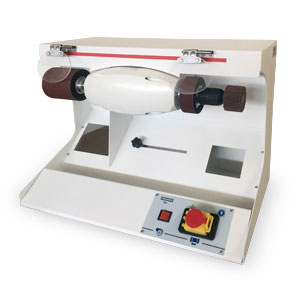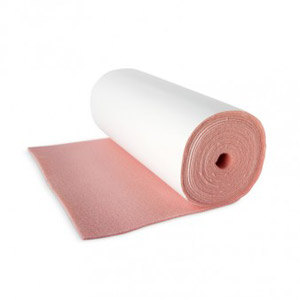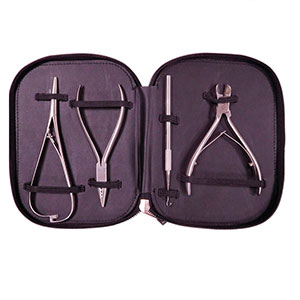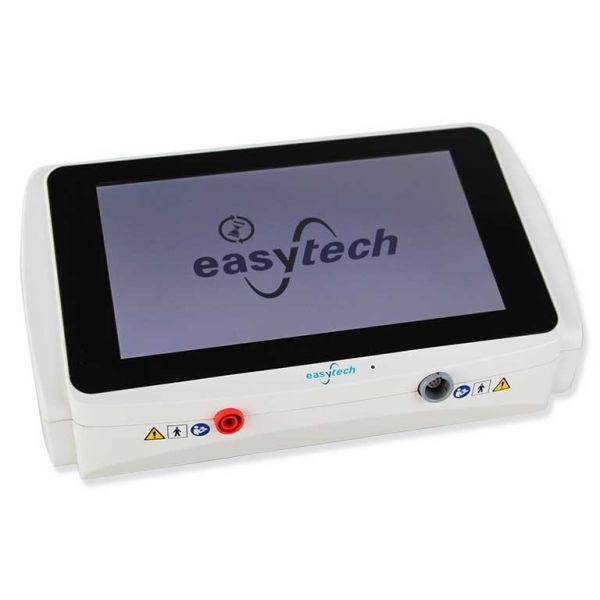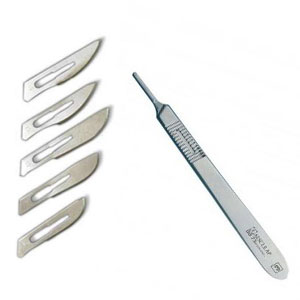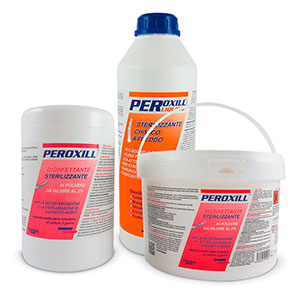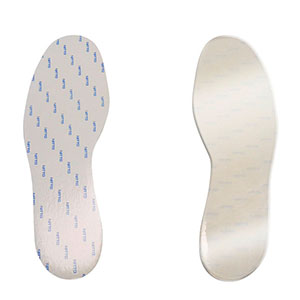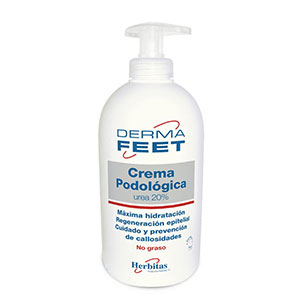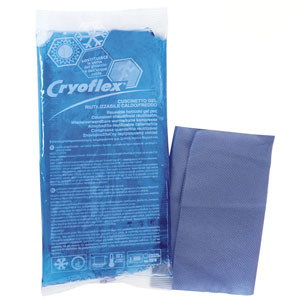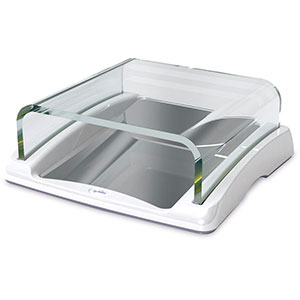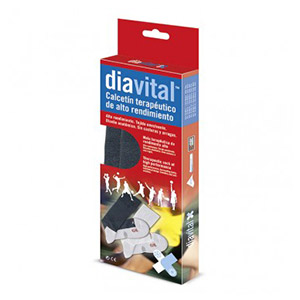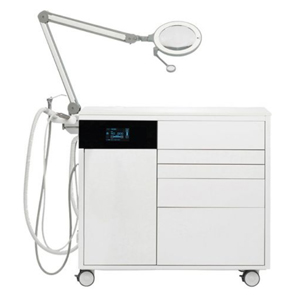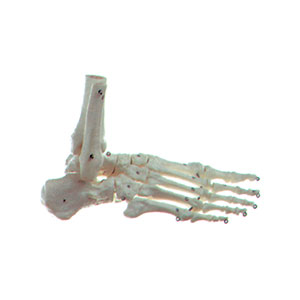PODIATRY
PODIATRY MATERIAL IN HERBITAS
Podiatry is the raison d'être of Laboratorios Herbitas. It is our vocation for more than 30 years. And that is why we are a leading company, present throughout Spain and in many other countries, where our products are shipped.
This specialization has allowed us to develop and create differentiated products, with great added value, and with great acceptance by professional podiatrists. In fact, many of these podiatry products have been created with their help and input.
All this makes our product catalogue the most complete, with a multitude of products and families, ranging from the necessary equipment and devices to consumables of all kinds.
The main families of podiatry products in our catalogue are:
Burs-Instruments-Creams-Podiatric Silicones-Materials for making insoles-Insoles and elements-Sterilization and Disinfection-Examination and Diagnosis-Micromotors-Disposable-Felts and Moleskines-Gel and Silicone Products-Ingrown Nails-Surgery-Equipment and Apparatus- Warts and Cryotherapy.
Silicones in podiatry
There are many types of silicones, whose use is also varied, depending on the sector in question.
In podiatry it is necessary for silicones to have very specific properties: elasticity-low Shore hardness-ease of work-no adhesion to the hand.
That is why in the Herbitas catalogue we have models with the lowest possible Shore (2 to 3 Shore A, in the Giulia model) and many other hardnesses, up to 35/40 Shore A (for corrective orthoses and children, as in the Orthotica model).
We also have models with catalyst, (liquid or Gel), such as BLANDA-BLANDA, PODIABLAND AND MASTER SERIES and the newest GIULIA.
And two-component models A+B, such as BLANDA-BLANDOS, PODIABLANDOS and ORTHOTICA.
These silicones for use in podiatry are leaders due to their quality and properties, being exported to many countries and accepted by a large majority of professionals.
They are used to make custom-made orthoses on the foot, for many pathologies, as well as to achieve palliative and pain-reducing results or pressure relief.
There arE videos available to see their use and how they work.
Instruments in podiatry
The most used instruments in podiatry are scalpel blades (Dialam, Swan Morton and Aesculap), gouges, which can be monoblock and sterile disposables (Dialam, Kyato, Lamdor, Firts Blades, Gouge Box and Eloi), pliers and shears (such as Aesculap and Herbitas and the high quality EK). Other instruments that are also widely used are cutting spoons, files and scrapers, chisels, spatulas and thorn pliers.
Of course, the basic instruments common to other medical specialties, such as scissors, needle holders and tweezers, are also used.
In podiatric surgery, bone files, elevators, separators and surgical drills are used.
Burs in podiatry
Burs and other rotary instruments are used very frequently in podiatric treatments.
Burs are classified, firstly, for their intended use. For example: for the nails in the case of Onychogryphosis, lowering of the nails, canals, thickened skins such as heels, helomas, etc.
Depending on the treatment and the professional's preference, they can take on very different shapes and sizes.
They also differ in the materials from which they are made, such as Tungsten Carbide, Titanium, diamond, and other materials.
Abrasive instruments are also widely used, such as sanding caps and mandrels due to their economy and individual use, and the Hybrid Twister and Hybridcap instruments, which are sterilizable.
Note that we also have left-handed drills and models specially designed for use in diabetic foot.
Felts and Molesquines
Herbitas adhesive felts are widely used in podiatry. In effect, the adhesive felts, in different thicknesses, (from 2 to 10 mm.) are used to ease, totally or partially, the weight of feet with ulcers or areas with localized pressure in certain areas.
Molesquines are made of very perched and spongy fabric, being ideal for after chiropody and as protection in friction and painful areas.
At Herbitas we have rolls of different sizes, the extra Rollón Herbitas format being the most notable, which is cheaper, and having the same quality.
This product is now also available in die-cut format, in different sizes, in the shape of a crescent, thus facilitating the professional's task, since they do not have to cut it.
And it is also available, and with great success, in mini-sheet format, available in patient packs.
Materials for making insoles
The materials used for making insoles can be very diverse. The most used are EVA materials (such as the EVASTAR variety, and the NORA variety), mouldable polyester resins (such as HERFLEX, HERFLUX, NOVAFLUX, ANTHRACITE and others). Thermoplastics, such as polypropylene and polyurethane-based materials.
Then there are other materials for lining, which are usually thinner and more flexible, such as EVAS HERBIFORM and EVASTAR of less thickness (1.5 or 2 mm), microfibers (such as ON STEAM), GRAPHYTE in various colours.
A highly appreciated material is SECOLINO. Specially designed for cases of excessive sweating and bad odor (Hyperhidrosis, Bromhidrosis), thanks to its patented, triple-layer technology, without glue.
Technical materials: This group of materials stands out for its great importance. Here are the shock-absorbing materials, such as Poron, Plantilite, Evastar Rebolastik, Choc and Choc Plus. And then the boosters, like the Evastar Evasport, Evastar Yellow Booster, and Prosport.
And for risk and geriatric foot, as well as diabetic foot, there are many recommended materials, such as Herbiprex Slow Memory, Capitoner, Herbiprex Dual Layer and Poroplas.
Insoles and elements
In podiatry, it is much more advisable to make insoles tailored to each patient, studying them and taking into account their particularities and pathology.
However, on many occasions and for different reasons, it is possible to use semi-finished insoles, which have the possibility of being moulded and adapted on the mould (and sometimes directly on the foot), thus being much more personalized.
At Herbitas we have many models of semi-finished insoles, such as: Ecoflex and Ecotech, Ecoflex Diabesole, Ecoflex Junior, Evastar Rebajada, Evalim Denise, and many others.
Warts and papillomas
Warts are also a very frequent cause of consultation and treatment in the podiatry consultation.
Plantar warts are caused by the human papilloma virus. The virus enters the body through small cuts, cracks, or other weak spots on the bottom of the foot. The symptoms they present are generally:
- Small, grainy, rough bumps on the bottom of the foot, usually at the base of the toes, front foot, or heel
- Hard, thickened skin (callus) over a well-defined "area" of skin, where the wart grew inwards
- Tiny black dots, commonly called "wart seeds" but which are actually small clotted blood vessels
- Pain and tenderness when walking or standing
The podiatrist has many mechanisms and products to treat this painful problem.
One of them is the Cure laser, which has enough power in watts, and the most suitable wavelength, to treat them.
Another widely used and highly effective procedure is cryotherapy, with the Freezpen device, which uses mini nitrogen cartridges. Easy, effective, safe, painless. Includes different diameter heads.
Another similar and very effective procedure is with the Dermojet needle-free syringe. This stainless-steel syringe makes a pressure shot, without a needle, of a drug that was introduced by pressure through the pneumatic shot.
And the Verrusheet, a sheet of extra soft material, with gels and special oils, which serves as an adjuvant element to acid treatment, and allows pain reduction, while helping to delimit and circumscribe the edges of the papilloma.
Podiatric creams
The most used creams in foot care are moisturizing ones, such as Dermafeet 20% Urea, with a unique formulation, or Dermafeet Urea 40 and 50%, for very thickened and/or cracked areas.
A little cheaper, but also very well formulated and of great quality, is the Herbifeet moisturizing cream.
For heels we can use the aforementioned 40 or 50% Urea and also Dermafeet Cracked Heels, with a composition of Urea + Salicylic Acid.
Now, as a great novelty, the Natalia foam cream has been presented, with 20% Urea. A state-of-the-art product that is immediately absorbed and leaves the skin feeling dry and very pleasant.
Other products in great demand are those used for the treatment of fungi. Like, for example, Dermafeet medical for Fungi, or the new Dermafeet Medical Varnish. And also, the Dermafeet Athlete's Foot.
As a complement to laser treatments, the use of Fungolaser Gel and the innovative Fungolaser Spray for shoes is especially recommended.
Other very frequent pathologies and for which we have a very good solution, is bad smell and excessive sweating.
The Sinodor range is specially designed for this. This range consists of a disinfectant and soothing Sinodor Spray for the foot and shoe, foot powders, Sinodor Powders, and a widely accepted product: Sinodor Insoles, created for cleaning orthopedic insoles without damaging them.
Scan and diagnosis
In this group of articles are devices widely used by professional podiatrists.
The pressure platforms, such as the Neo-Plate, available in 3 dimensions, stand out for their enormous implementation. Or the Run Time sensorized tape, and other instruments that, although simpler, are of great use and importance in podiatric practice.
We can note: Podoscope, Pedigraph, Goniometer, Plumb Line, Goniometric Ruler, Hip Gauge, Perthes Ruler, Foot Gauge, Tuning Fork, and others.
The most innovative are the intelligent PodoSmart insoles, which include an internal chip for the study of many parameters in the footprint.
Due to their importance, ultrasound scanners are described in another group.
Ultrasound scanners
Ultrasound scanners are new-generation, non-invasive devices whose ultrasound-based technology is used, increasingly due to its innocuousness, for diagnosis and examination in many types of medical tests. With it, 2D or 3D images are formed, which are analysed by the specialist.
Its use is very wide, covering many medical professions, such as cardiologists, urologists, gynaecologists, physical therapists and many others. Lately they are being introduced with great success in podiatry.
At Herbitas we teach ultrasound courses and workshops, oriented towards podiatry and physiotherapy.
There are many models of ultrasound scanners. And the choice in terms of quality is very important, since a poor-quality device will not allow you to appreciate the images well (even in some cases, details of it will be lost) and will cause the investment to fail. In this type of device, the difference in quality is more decisive than in others.
Other differences among the models are the types of probes, and they usually vary depending on the type of test you want to do.
There are also portable or fixed ones or with supports specially designed to support them.
The ultrasound is a non-invasive and innocuous device and also allows the study of certain soft tissues that other procedures, such as radiography, do not appreciate, in addition to not being penalized for their radioactive effects.
The ultrasound machine can be used for the examination of many types of diseases and tests, such as: echocardiography, abdominal wall, kidneys, and other organs, the uterus.
A Doppler ultrasound allows us to analyse the speed with which the blood flows and in this way monitor narrowing or occlusion of the blood vessels.
In physiotherapy and podiatry, the ultrasound is a very useful tool in the evaluation of soft tissues (tendon, muscle, bursa, ligament, subcutaneous cellular tissue, viscera, peripheral nerves, blood vessels...) and cortical bone.
In sports physiotherapy, it allows assessing the adequate stabilization of the joints, as well as their morphology. It allows the analysis of the tendons and the muscular structure and therefore the study of many types of pathologies, such as ruptures, compression, or other complications. (myositis ossificans, etc…)
Micromotors
Micromotors are widely used in podiatry. They are used to use rotary instruments, such as burs and abrasives.
There are several kinds of micromotors, all available at Herbitas: the powerful and robust monobloc handpieces, such as the Marathon, the brushless Marathon Handy, the Escort II or the Volvere from NSK.
Some of these models are also available with a removable handpiece.
We also have suction micromotors, such as the Medipower and the Podotronic.
And in turn the handpieces can also be purchased separately.
For surgery, especially MIS, the Bien Air Chiropro motor is particularly suitable (available even with a 10:1 reduction handpiece)
Ingrown nails
Ingrown nails are a fairly common pathology in podiatry consultations. And it is painful and annoying.
The most common techniques are through a small surgery (the podiatrist uses different techniques and procedures for this), by means of instruments such as ingrown nail pliers and canal burs.
We also have other less bloody procedures, such as orthonyxia treatments, which seek to correct the nail, with a greater or lesser degree of tension.
These orthonyxias can consist of wires, which correct the nail, or with systems that are much simpler to apply and more effective, such as Podofix, Combiped, Podostripe, or Celsystem.
These systems are very effective and do not cause any pain or risk. It is very convenient to carry out training courses and Herbitas continuously carries out this type of training.
Videos on how to apply them are also available.
For the reconstruction of the nail, we also have very effective and proven products, such as Gel with Clotrimazole, and self-curing resins, especially the latest generation with Silver and odorless.
For reconstruction it is also convenient to carry out training courses and Herbitas also carries out this type of courses.
Equipment and Apparatus
There are many devices used in podiatry. For example: All those mentioned before the examination, and of course the armchairs and equipment. (our company is an exclusive distributor of the Spanish-made FEDESA brand).
These armchairs and equipment are available in models with various motors and the equipment can be attached to the armrest, for greater ergonomics, or in furniture. Like for example the Aura or the Onyx or Caprice. And all of them represent the highest quality, robustness and design, also having a network that covers the entire national territory for assembly and technical assistance, all approved by Fedesa.
There are also laser devices for the treatment of fungi and warts and functional recovery and pain. Our company is a distributor of the prestigious brand, Applied Podiatry.
Autoclaves are the ideal machines for steam sterilization. They are small in size, suitable for small clinics.
Other devices to mention are the thermosealer, for cutting and sealing the rolls to be sterilized, or the turbine aspirator, to be coupled to the micromotors.
Autoclaves
The autoclave used in clinics is a safe and simple device, and on the other hand mandatory.
There are many kinds of autoclaves, such as steam, ethylene oxide, gamma rays, etc. But the most used in small clinics are those of steam.
Modern autoclaves are type B, and include double vacuum, and several automatic programs for different products to be sterilized.
There are autoclaves of different capacity or size, although the most used are those of 18 or 21 litres.
The best-selling brands are: STE TYPE “B” and Autoclave Kronos Autoclave TYPE B 18 Litres
Incubators
Incubators are a necessary and mandatory complement for the correct operation of autoclaves.
Once a test or biological control (consisting of an inactivated culture of control germs) has been introduced into an autoclave cycle, this culture is placed in the incubator to check that it is indeed working correctly.
Podiatry Clinic Disinfection
Asepsis includes all areas and spaces of the clinic, as well as the hands of professionals, the instruments, and the environmental space.
For the surgeon's hands and for the patient's skin, we have products such as Sterillium, an excellent product for deep disinfection of hands and skin, Alcohol wipes 100 units, Hydrogen peroxide 250 ml, Alcohol 96º 250 ml, LH SOAP. Biocidal hand soap, BACTISEPTIC ORANGE, Desinclor, Cutasept Incoloro, Yodinco Scrub, and others.
For the disinfection and sterilization of instruments, we have the following products: Darodor 4000, Daroscope E Turbo, Bodedex Forte Solución, Enzymed, Darodor Sinaldehyd-2000, and Chrysalised Phenic Acid, among others.
For the disinfection of surfaces and fomites, we have: Medicaline desinfectant wipes, Clinell Universal wipes, Bactilemon Soft, Darodor Surface Desinfectant 750 ml, and others.
For the disinfection of the environmental space we have: NDP Air Total +,(this product is used to disinfect the entire environmental space of the clinic, including hidden spaces, penetrating any corner or recess), Tidas System, (for air conditioners), Shoefresh (which is valid for both shoes, such as for small volume spaces) and air fresheners specially designed for the clinic such asSensory spray.
Insole Workshop Machinery
The most used devices in the workshop for making insoles are polishers, vacuum machines or vacuums and ovens.
The polishers can be with and without suction. It is recommended the suction to be performed with turbine.
There is also a model of polishing machine without suction, but closed, so that no dirt comes out. This model is ideal for closed rooms.
And the sandpaper tools are interchangeable, and of various sizes and shapes.
Vacuums are also available on some models with built-in heat. These VACUUMS also have outputs for the direct adaptation technique (T.A.D.,in Spanish)
There are very simple models, with a simple pressing platen.
Bandages for Podiatry
The bandages used in Podiatry can be of many different types. First of all, we can mention the elastic tapes, for kinesiology, such as the Mecron Elastic Tape.
Then there are the adhesive bandages, such as Tensoplast PH, or Careplast Plus.
Cohesive bandages are also important, such as Herbilastic or Herbicovalastic, Elastomull Haft, Rinkilastic, or Medirip.
And the crepe type, like the Crepe Extra.
Why buy Podiatry material at Herbitas?
Laboratorios Herbitas is a company dedicated, almost exclusively, and preferably, to podiatry.
It's been many years, with a lot of development and research work with podiatry professionals. And all this has provided us with know-how and our own technology, which allows us to offer exclusive products, highly tested and tested in daily consultation with the professional.
That is why many of these products are also exported to other countries.
Also, as they are self-developed products and have so many alternatives, we can offer the podiatrist the best products, the largest variety, the best and most immediate service and, particularly, at the best price.
